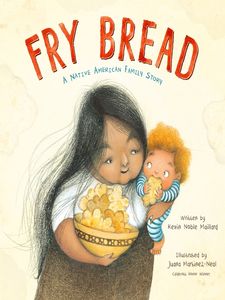Wednesday, September 29, 2021
The Lion and the Mouse
Neem the Half-Boy
Written by Idries Shah
Illustrated by Midori Mori & Robert Revels
Summary:
This clever tale hails from Afghanistan, Central Asia, and the Middle East. We meet the Queen of Hich-Hich, who is very desperate to have a son; she sought guidance on how she may do so. Arif the Wise Man tells the Queen to eat an apple to have a son; she was distracted and left the apple half-eaten. Soon her son was born, but he was only half a boy: he had one eye, one arm, hopped on one leg, and was named Neem, which meant "half" in their language. Neem grew tired of being a half-boy and sought Arif the Wise Man to find how he could become whole. Arif told him to banish the dragon Taneen and use a potion hidden in his cave. Neem offered to bring Taneen a stove in exchange for the cure and peace in the village.
Grade Level and Unit:
Neem the Half-Boy would be a good fit for third to fifth-grade classrooms. This book is a fairy-tale, but it does deal with more serious topics. A lesson on integrity and character traits would be a great opportunity to use this book. I also think a teacher could use this story as a segue into a narrative writing prompt.
The Magic Pillow
Awards: Storytelling World Award, "Stories for Adult Listeners"
Summary:
The Magic Pillow is based on a Chinese short story; a young boy named Ping comes from a poor but very happy family. He gets stuck in a snowstorm and finds an inn to stay at until it passes. There, he meets a magician who performs amazing tricks. After seeing the diamond tree the magician created, Ping becomes sad about his family's poverty. The magician gives Ping a pillow that will make his wishes a reality. In his dream, Ping finally has all the money and fame he ever desired. All is well until others become envious and he is thrown in prison. Eventually, he is released and restored to his glory. This cycle goes on for years until Ping is 108-years-old. Ping has realized that he wasted his life chasing status; then he wakes up. Ping's dream experience helped him realize that status would not be worth it and he is happy with his life.
Grade Level and Unit:
I would suggest this book for kindergarten through fifth-grade classrooms. This would be great to catch students' attention and get them thinking about different cultures. This could also be used for teaching about folk stories and types of literature in fourth or fifth grade. I also think this book could be beneficial to a lesson on author's purpose; I would suggest using it as an introductory text before getting into the main part of the lesson.
The Land of the Dragon King and other Korean stories
The Gigantic Sweet Potato
Written by Dianne de la Casas
Fry Bread: A Native American Family Story
Written by: Kevin Noble Maillard Illustrated by: Juana Martinez-Neal Genre: poetry, informational Awards: 2020 Robert F. Sibert Information...

-
Written by: Linda Sue Park Illustrated by: Ho Baek Lee Genre: realistic fiction Awards: Bank Street Best Children’s Books of the Year New...
-
Written by: Maribeth Boelts Illustrated by: Noah Z. Jones Genre: Contemporary realistic fiction Awards: READ Boston Re...
-
Written by: Hena Khan Illustrated by: Aaliyah Jaleel Genre: multicultural Awards: Amelia Bloomer book list 2020 Bank Stree...





